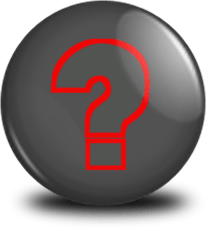CSCI 441 - Computer GraphicsFall 2020 - Midterm Project - Enter the ParkCanvas | CS @ Mines | Mines | Piazza |
||||||||||||||||||||||||||
| | Home | Assignments | Leaderboard | Schedule | Resources | | ||||||||||||||||||||||||||
|
|
||||||||||||||||||||||||||
|
This assignment is due by Thursday, October 15, 2020 by 11:59pm.
After screwing in the last bulb, you head back to your track. However you find construction
tape blocking the entrance and a permit displayed next to your sign. Wonderful! Construction has begun! You
get closer to read the fine print of the permit.
You storm off looking for the man that seemed to always be around, until now. There seems to be a commotion going on near a temple so you head that direction. Approaching nearer, there is a bright glowing orb hovering above. You don't recall seeing that before. As you push through the crowd and get near the front, the man is trying to calm everyone down. Luckily, he sees you and grabs you by the arm. Quick! They'll eat me alive out here. We must head inside. I've been waiting for you. Amaterasu wants to see you right away.Perfect. Maybe now I'll find out what's going on. As you move through the temple, you can no longer hear the sound of the crowd outside. You don't remember making any turns, but you feel that you've been walking too long compared to the size of the temple. Are you going underground? The man stops abruptly and you nearly walk into his back. He points to a sign on a narrow wooden door.
He nods at you and swings the door open motioning for you to enter. You proceed.
Part I - Build Your Coaster
Quickly scanning the room, there are nearly forty other people gathered - and you saw them around the park as you ran through. Why are they
here too? You find the last remaining open seat and wait for whom you assume is Amaterasu to speak as they have already made their way to the podium.
"We have asked all of you here as you all have the same quest - to make Onogoro Island the most successful theme park. For years we have been trying to win a Spiny Shell but our attractions were never good enough. Alone, none of you will ever have the resources to build the one great ride. But together, perhaps you can find a way to make the fastest and best track on the planet. Here, take one of these flyers and start right away. Resources are limited so you must hurry. We wish to open Onogoro Island in a few months time so any delay will hinder our chances for the award."You quickly take one of the flyers as they go by and begin reading: The Spiny Shell has a series of jugding criteria. There are four in all, each testing a different skill you have learned in your travels. You must choose some of your fellow Heroes to join you. Onogoro Island has thirteen pit crews and each has enrollment slots available. Each pit crew can accept three Heroes.Scanning the room, you instantly know who should join you in your pit crew. You pull them aside, speak for a few minutes, and it's agreed. You three shall begin preparations immediately. Part II - Website
Update the webpage that you submitted with A4 to include an entry for this assignment. As
usual, include a screenshot (or two) and a brief description of the program, intended to showcase what
your program does to people who are not familiar with the assignment.
Part III - Presentation
To demonstrate the features and world you have created, each team will submit a video of your program running. It needs
to clearly demonstrate each of the three different light types, the different camera types, and your three heroes.
By the end of lab on October 16, each hero will view and provide feedback for each video. At the end, each hero will vote for their favorite pit crew that should win the Spiny Shell. !!EXTRA CREDIT!! For extra credit, have your video generated by using an external file. We will model our file after the md5camera file format which implements a free cam model. At the start of your program, the user needs to be prompted which camera file they wish to open. The file is then formatted as follows: n lines. Each line
is made up of the following information:
Documentation
With this and all future assignments, you are expected to appropriately document your code. This includes
writing comments in your source code - remember that your comments should explain what a piece of code
is supposed to do and why; don't just re-write what the code says in plain English. Comments serve the dual
purpose of explaining your code to someone unfamiliar with it and assisting in debugging. If you know
what a piece of code is supposed to be doing, you can figure out where it's going awry more easily.
Proper documentation also means including a README.txt file with your submission. In your
submission folder, always include a file called README.txt that lists:
Grading Rubric
Your submission will be graded according to the following rubric.
Experience Gained & Available Achievements
Submission
When you are completed with
the project, zip together your source code and
README.txt. Name the zip file, PitCrew_MP.zip.
Upload this file to Canvas under MP Source Code. Only one team member needs to submit the project source code.Upload the generated video, as an mp4, to Canvas under MP Video. Name the video PitCrew_MP.mp4. Only one
team member needs to submit the project video.Every team member needs to submit their individual website under MP Website. Name the zip file HeroName_MP.zip.
This assignment is due by Thursday, October 15, 2020 by 11:59pm.
| ||||||||||||||||||||||||||
|
Last Updated: 09/29/20 16:28
|
||||||||||||||||||||||||||

Any questions, comments, corrections, or request for use please contact jpaone {at} mines {dot} edu. Copyright © 2015-2020 Jeffrey R. Paone |
||||||||||||||||||||||||||



